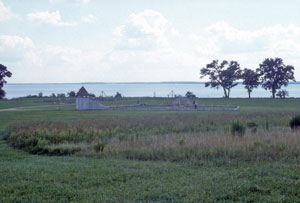by
SAH Heritage Conservation Committee | Jul 09, 2015
Letter to Dominion Power on Planned High-Voltage Transmission Lines Crossing the James River near Jamestown, Virginia (9 July 2015), and a second version of the letter sent to the U.S. Army Corps of Engineers (10 November 2015) -
Read Letter
Issue:

Dominion Power proposes construction of a high-voltage transmission line to cross the James River near Jamestown, Virginia. The proposed project, which may include as many as seventeen towers, some of which are designed to be up to 295 feet tall, would have a serious and negative impact upon the nationally significant historic and cultural resources in the area. The area is home to Historic Jamestowne, Carter’s Grove (the site of the 17th-century English settlement known as Wolstenholme Towne), the Colonial Parkway, the Captain John Smith National Historic Trail (managed by the National Park Service), and the Chesapeake Bay Gateways and Water Trails Network. This region receives approximately 3.5 million visitors annually, drawn to the area’s significant cultural and historic resources as well as the beauty of the James River drainage and its surroundings.
SAH position:
The Society of Architectural Historians joins with Jamestown Rediscovery, Preservation Virginia, and the National Trust for Historic Preservation, together with other leading national and regional institutions, in opposition to Dominion Virginia Power’s proposed siting of the transmission line in this location. We strongly urge Dominion Power to consider alternatives such as adopting a different route that involves less historically-sensitive locations, burying the transmission lines, or exploring alternative energy options.
Follow-up:
The issue is still working its way through the federal regulatory process.
More information:
National Treasures: James River - National Trust for Historic Preservation
Corps Still Sees Power Needs, Few Alternatives to Skiffes Creek Line - Daily Press